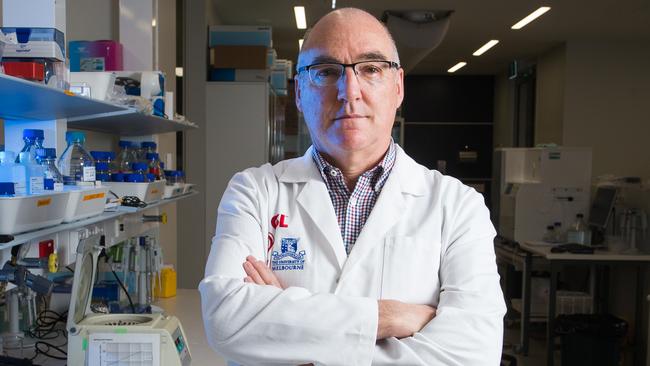Budget 2020: Vaccine timeframe backs key forecasts
The scientist at the forefront of Australia’s hunt for a vaccine against COVID-19 says a population-wide vaccination program will be in place by the end of next year.

The scientist at the forefront of Australia’s hunt for a vaccine against COVID-19 has backed a key assumption in the federal budget that a population-wide vaccination program will be in place by the end of next year.
The budget forecasts for economic growth are predicated on the assumption that COVID-19 outbreaks will be “largely contained” and general social-distancing restrictions are assumed to continue until a vaccine is fully available.
Andrew Nash, the chief scientific officer at biotechnology company CSL, said the pace at which vaccine clinical trials and preparation for manufacture were developing meant it was likely that a vaccine would be widely available to Australians by late 2021.
“From everything we know at the moment, that seems to be a reasonable assumption,” he said.
CSL has an agreement to manufacture 51 million doses of a vaccine being developed by the University of Queensland, and 30 million doses of an Oxford University vaccine under a deal with Astra Zeneca. The Oxford vaccine is in phase three human trials.
“We’re quite hopeful that among the vaccines being trialled … there will be a number that generate the response we’re looking for,” Dr Nash said. “We’re confident that with the effort we’re putting in, we’ll have those vaccines ready to go if clinical studies prove effective.”
Dr Nash also welcomed a $2bn boost announced in the budget to the Research and Development Tax Incentive. The reforms will remove the cap on refunds, lifting R&D tax offset rates and providing extra incentives to businesses that heavily invest in R&D.
“Our own view is that to really build the scale and the industry that we need in Australia, it will require a more market-based approach rather than just grants,” Dr Nash said.
He said market-based incentives were urgently needed for the onshore commercialisation and manufacturing of any vaccine breakthrough. Until now, he said, Australia lacked those incentives, “in stark contrast to other advanced nations which heavily incentivise commercialisation”.
They include the UK, France, Singapore, Switzerland and Ireland.
Patent box and intellectual property tax incentives now feature prominently in many jurisdictions throughout Europe, with 15 of the 28 EU member states offering IP tax incentives.
“They have been introduced to alleviate unfavourable tax elasticity, remain competitive and to reduce the loss of IP-related tax revenue,” Dr Nash said. Similar schemes have also been adopted by India, Singapore and Israel and are under active consideration in Canada and the US.
Dr Nash said grants alone would not achieve the government’s vision for local medical and biotechnology manufacturing, but must be matched by commercialisation incentives that are competitive with other nations.
“For Australia, the benefits of an IP-based tax incentive would not just be tax revenue, but would include increased productivity, new jobs, a more highly skilled workforce and the creation of associated supply chains,” he said.



To join the conversation, please log in. Don't have an account? Register
Join the conversation, you are commenting as Logout